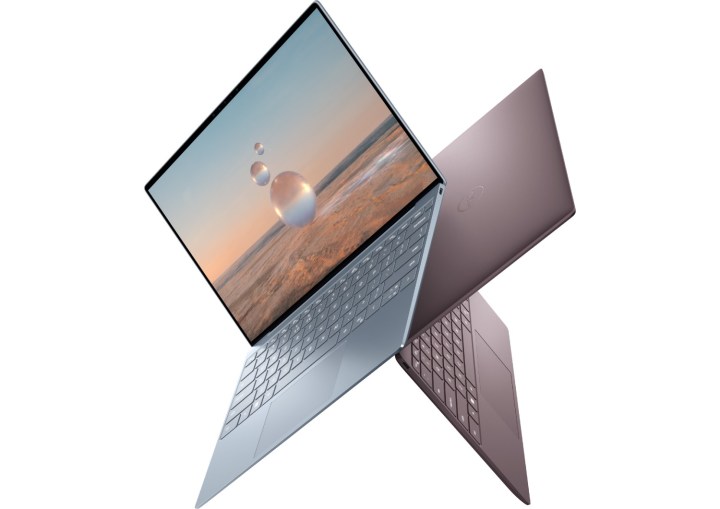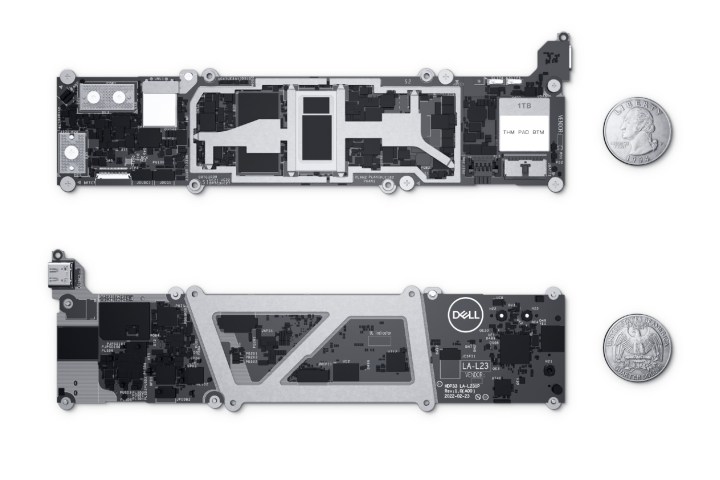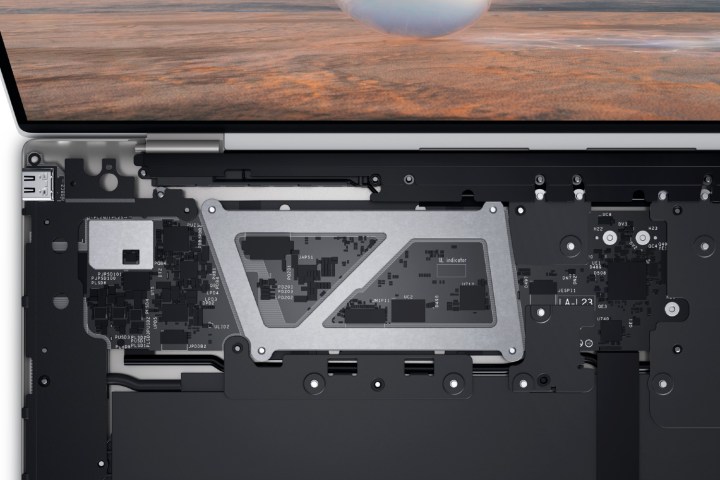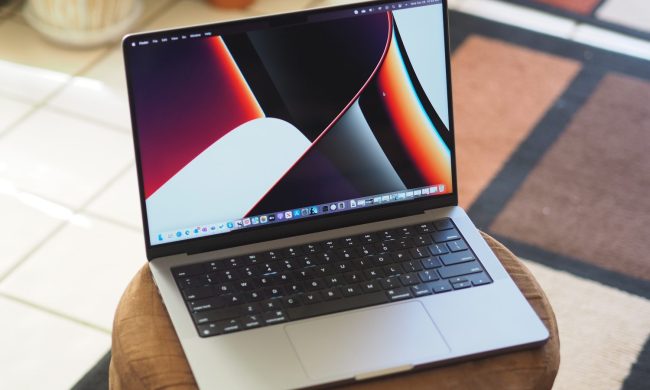“We didn’t want to wait for PCs to catch up to smartphones.”
According to those at Dell I spoke with, that was the motto behind the sweeping internal changes to the new Dell XPS 13. As laptops like the new MacBook Air rush toward thinner designs and more efficient, phone-like processors, companies like Dell are being forced into a corner. Wait for its manufacturing partners and chip suppliers to catch up or push the technology forward on its own terms.
If the completely redesigned XPS 13 is any indication, the designers and engineers over at Dell aren’t afraid to make some radical changes to the formula of making laptops — even if it comes with some considerable risk.

The new XPS
Heading into 2022, the Dell XPS 13 had hit a point of no return.
As with every product design, the more iconic it is, the quicker it grows stale. And that’s exactly where the Dell XPS 13 was in 2021. Great as it was, it was more of the same design DNA that had been around since 2015. That’s a problem if you consider yourself a brand that lives on the cutting edge of the industry.

The XPS 13 Plus caused quite a stir when it was announced at CES this past year. With an invisible haptic trackpad, the lack of a headphone jack, and capacitive touch buttons to replace the function row, this was unlike any laptop we’d ever seen. But because this is the XPS 13 Plus, a new laptop in the lineup that’s still a relatively safe risk for Dell to take. Dell likely doesn’t expect to sell many units, while still getting to see itself as the brand that’s pushing the boundaries.
What the company does with the XPS 13, though, is far more risky. Changes to the beloved XPS 13 feel a bit more permanent, which is why you won’t find elements such as the haptic trackpad or the capacitive touch buttons. One change that the XPS 13 does share with the XPS 13 Plus is dropping the 3.5mm audio jack, and instead Dell includes a USB-C to audio adapter in the box.
Still, there are some significant changes to the outward appearance of the XPS 13 this year. The different materials are the first dead giveaway that you’re looking at the new model, which swaps out the carbon-fiber weave for a cleaner and more conventional CNC-machined aluminum. The two color options are also new — “Sky” and “Umber.”

These new materials don’t just look different — they also feel different. The carbon-fiber weave of older XPS 13 machines was a bit softer to the touch. It was subtle, but it was another way the XPS 13 differentiated itself from the sea of aluminum laptops out there.
But the biggest change is the size of this new laptop. The XPS 13 was already among the smallest laptops you could buy, thanks largely to the tiny bezels that its design pioneered. The latest model takes the emphasis on portability even further though, shrinking the thickness down to 0.55 inches and the weight to 2.59 pounds. That’s not a far stretch from where the XPS 13 already, but how do you shrink down an already tiny laptop? Well, apparently, it involves employing some new ideas in engineering that aren’t typically used in PCs.
Borrowing phone tech

Although the XPS 13 Plus diverts more from the old XPS design on the outside, the new XPS 13 makes more changes internally. Dell had to go back to the drawing board to hit its design goals of reducing the overall footprint and size of this laptop.
It all starts with the new motherboard itself, which is now 1.8 times smaller than on the old model. The new board uses a technique from the phone world called the layer stackup, the process of stacking the materials of the printed circuit board (PCB). The result is a 0.6mm-thick PCB, down from the usual 0.86mm or even 1mm thickness of standard laptop boards.
Not only is the motherboard tiny, Dell is also using the smallest components available to fit on that board. For one, it uses a Ball Grid Array (BGA) SSD, which is the smallest form factor for an NVMe SSD that exists — 7.5 times smaller than other options.

Dell’s doing something unique with the memory to make it fit too. It’s called package-on-package memory. So far, it’s been used specifically on Qualcomm mobile chips as a way of adding RAM without taking up more space. That’s exactly what Dell is doing here too — placing memory directly on top of the CPU package, soldered right to the top.
According to Dell, it’s not been done before on a laptop due to concerns over thermal stability. A rigid chip with memory works fine on cell phones, but you don’t want to warp your PCB from the heat. But Dell says it’s engineered a way forward that overcomes that challenge.
Your concerns over thermals probably won’t be dissuaded when you notice that the new XPS 13 has just a single fan, down from the two fans included on the previous-gen XPS 13. It’s just a traditional design too — no big heat sinks or vapor chambers. Normally, that would be a cause for concern for the thermals of the system.

To get around that problem, the new Dell XPS 13 uses just a 9-watt processor this time around — Intel’s U-series 12th-gen chips. It can run at a sustained 12 watts of power, but this is certainly a reduction over the 15-watt chips in last year’s model. Dell says that performance should be on par with last year’s XPS 13, though, especially in single-core performance.
Running in its default Balanced mode, however, Dell says the lower-powered chip allows for cooler skin temperatures on the surface of the device and quieter fan speeds. The Performance mode on this new XPS 13, which was previously just about cranking up fans, can now sustain 12 watts of power and deliver improved multi-core performance.
The last piece of the puzzle is the battery. These days, batteries take up a large majority of the space inside a laptop chassis. So, if you’re going to shrink that available space, you’re in trouble. But Dell is using a higher energy density battery technology, which it says is key to reducing the size of the chassis while maintaining the same battery runtime as its predecessor. This new battery is 800 watt-hours per liter — and to put things in perspective, the M1 MacBooks still use a 600 watt-hours-per-liter battery.
It’s smaller, yes. But is it better?

You might look at all that and wonder if it’s worth it. That’s a lot of engineering to shrink the chassis by this much — especially when it involves sourcing expensive new parts and causing potential thermal issues. Using a 9-watt chip alone is a risk that could backfire, depending on how the system ends up handling performance.
Whether that risk will pay off is yet to be seen, but when the competition is this fierce, companies like Dell can never rest on its laurels, happy to have what many consider to be the best Windows laptop you could buy. Most would be content enough to sit on top.
But if Dell is going to compete with the MacBook Airs of the world, it knows it’s going to take more than just waiting for Intel and AMD to figure things out. Success or not, you have to respect the kind of bravado it takes for Dell take matters into its own hands.


